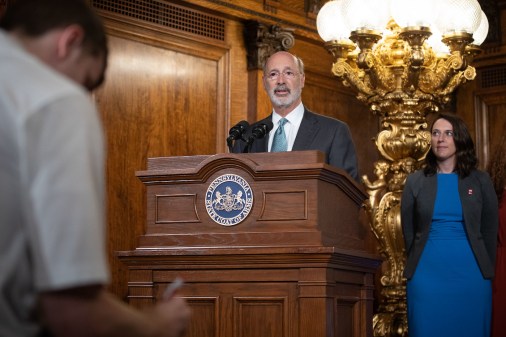Election Day: 10 new governors to take office
Ten new governors will take control of state governments, including in three of the nation’s six most populated states, following Tuesday’s midterm elections that saw 36 governorships contested around the country.
The new governors are expected to bring a host of new faces and policy changes to their states that will eventually impact priorities for state IT officials.
Perhaps the most notable results came in Pennsylvania and Illinois where both incumbents lost their seats in changes that in one case was expected for months and in another, came as a slight surprise.
Pennsylvania Democrat Tom Wolf easily defeated Republican Tom Corbett in a result that was widely anticipated. Corbett faced an uphill battle with low approval ratings.
“Never before has an incumbent governor in Pennsylvania been defeated for re-election, but that changed tonight,” Peter Shumlin, chairman of the Democratic Governors Association, said in a statement Tuesday. He cited Wolf’s energetic campaign and his “vision for creating the fresh start that the people of Pennsylvania so badly need” for defeating the incumbent.
Illinois will also see a change in the governorship as Republican Bruce Rauner unseated Democrat Pat Quinn as the only other incumbent to lose his or her seat in this year’s election cycle. Quinn held a small lead in the polls heading into Tuesday but lost the election 51 percent to 46 percent.
They are among the many new faces heading into governor mansions across the county in a year when a number of large states found themselves with an open election as the incumbent either decided not to run or had reached the term limit.
In Texas, Republican Greg Abbott, the attorney general for outgoing Gov. Rick Perry, easily defeated Democratic challenger Wendy Davis, while in Massachusetts, Republican Charlie Baker edged out Democrat Martha Coakley in one of the nation’s closest races.
Another notable result came out of Maryland where Democrat Anthony Brown, the lieutenant governor under Gov. Martin O’Malley, lost to Republican Larry Hogan despite holding a more than double-digit lead in the polls as recently as two months ago.
Republicans also continued their dominance of governors’ mansions when a number of GOP leaders fought off stiff challenges from Democrats.
Wisconsin’s Gov. Scott Walker and Georgia’s Gov. Nathan Deal both narrowly won re-election.
In Florida, Republican Gov. Rick Scott, believed to be one of the most vulnerable governors heading into the election, narrowly edged out former Florida Gov. Charlie Crist, who was looking to reclaim his seat. This election was one of the closest watched in the government technology community as the state is in the process of setting up a new technology oversight agency, and the governor would have say in the person charged with running it.
As of Wednesday morning, the races in Alaska, Colorado, Connecticut and Vermont had yet to be called. The Republicans currently hold 31 governorships compared to 15 for the Democrats.
These new faces likely mean a lot of changes in the state government technology community, as new administrations typically like to bring in their own person to lead the state’s technology efforts, especially if that person is a member of the governor’s cabinet, which is the case in most states.






